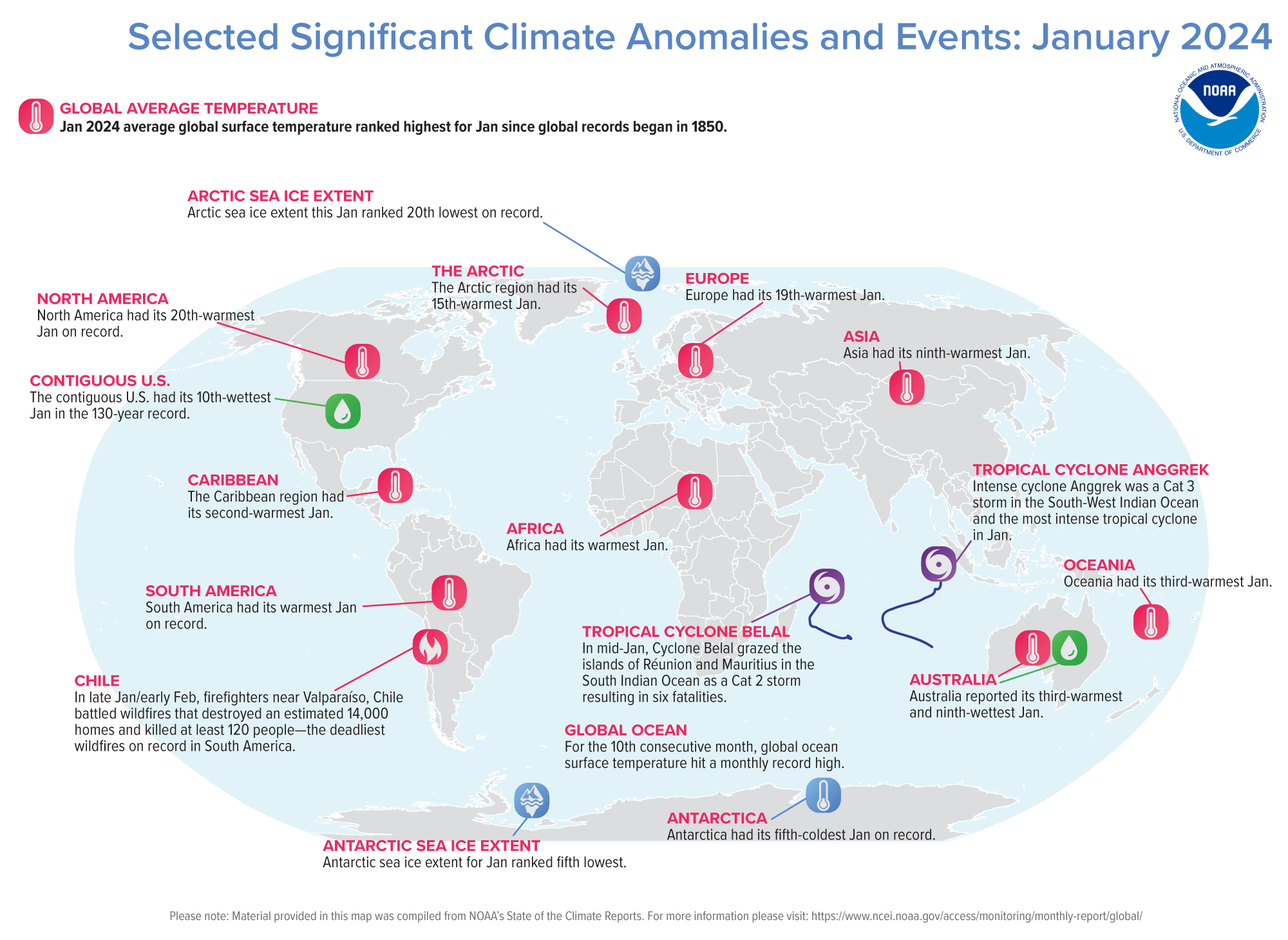The planet had its second-wettest January on record

January 9, 2024: A resident walks through floodwater in Rochester, Australia, after heavy rainfall. January 2024 was the second-wettest January for the globe, following on the heels of a record-wet December. (Image credit: Diego Fedele/Getty Images)
Our planet just added to its streak of record-warmth months, starting the new year with the warmest January on record. Last month was the eighth-consecutive month where monthly global temperatures hit a record high.
The month was also the world’s second-wettest January on record, according to experts and data from NOAA’s National Centers for Environmental Information (NCEI).
Below are more highlights from NOAA’s January global climate report:
Climate by the numbers
January 2024
The average global land and ocean surface temperature was 2.29 degrees F (1.27 degrees C) above the 20th-century average of 54.0 degrees F (12.2 degrees C), ranking as the warmest January in the 175-year global climate record. This was 0.07 of a degree F (0.04 of a degree C) above the previous record from January 2016.
Temperatures were above average throughout the Arctic, most of northeastern North America, central Russia, southern and western Asia, Africa, South America, eastern and southeastern Asia and Australia. Africa and South America saw their warmest Januarys on record.
January was the second-wettest January for the globe, following on the heels of a record-wet December. Large portions of North America, Asia and Australia were wetter than average, whereas much of southern Africa and South America were drier than normal.
January also saw a record-high monthly global ocean surface temperature for the 10th-consecutive month. El Nino conditions that emerged in June 2023 continued into January, and according to NOAA's Climate Prediction Center it is likely that El Nino will transition to ENSO-neutral by April–June 2024 with increasing odds of La Nina developing in June–August 2024.
According to NCEI’s Global Annual Temperature Outlook, there is a 22% chance that 2024 will rank as the warmest year on record, and a 99% chance that it will rank in the top five warmest years on record.

Other notable climate events
- The world’s sea-ice coverage was below average: Global sea ice extent (coverage) was the seventh smallest in the 46-year record at 6.90 million square miles (440,000 square miles below the 1991–2020 average). Arctic sea ice extent was slightly below average, while Antarctic sea ice extent was significantly below average, ranking fifth smallest on record.
- Global tropical cyclones were about average: Six named storms occurred across the globe in January, which was close to the 1991–2020 average of seven named storms. The only major tropical cyclone was Intense Tropical Cyclone Anggrek, which remained in the central part of the South Indian Ocean and did not approach any major land masses. Severe Tropical Storm Alvaro made landfall in Madagascar at the beginning of the month, resulting in significant impacts and numerous fatalities. Tropical Cyclone Belal caused extensive flooding in Mauritius and also impacted La Reunion. Tropical Cyclone Kirrily brought heavy rains and wind to northeastern Australia.
More > Access NOAA’s latest climate report and download the images.



